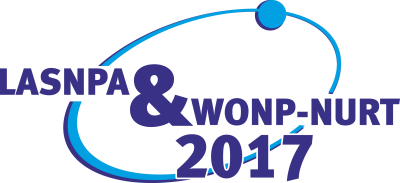Speaker
Description
The chromium - compensated gallium arsenide is attaining a relevant position between the materials devoted to the development and fabrication of radiation detectors. This material shows high resistance to the radiation damage, high effective Z, relative low production cost, possibility to grow large area films, etc. Some results from the study of Timepix hybrid detectors based on GaAs:Cr by using the Monte Carlo modeling of radiation transport are presented in this contribution. The MCNPX, GEANT4, SRIM and MCCM code systems were used for this purpose. In-depth profiles of the energy deposited by the incident radiation within the sensor active volume are included. Similarly the shapes and dimensions of the charge carriers clouds generated by different energy incident photons, in different geometrical conditions, are also obtained and presented. The ranges of two different energy $^{22}$Ne ions in GaAs:Cr material and the contributions from each energy loss channel were also determined in the U-400M cyclotron. In addition, the effective displacement cross-sections and the number of displacement per atom produced for each atomic specie are presented when the device is irradiated with electrons and photons at different energies.




